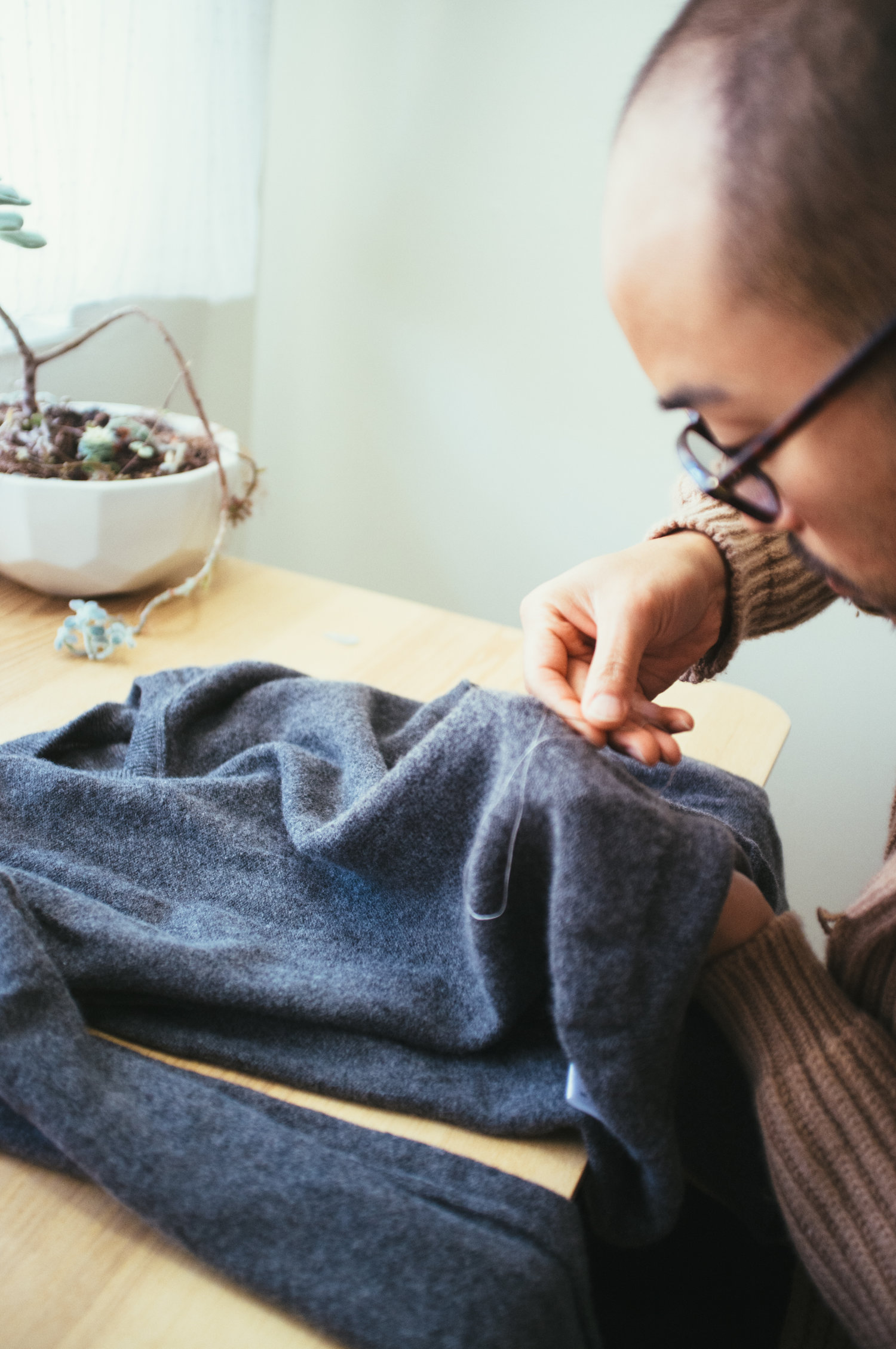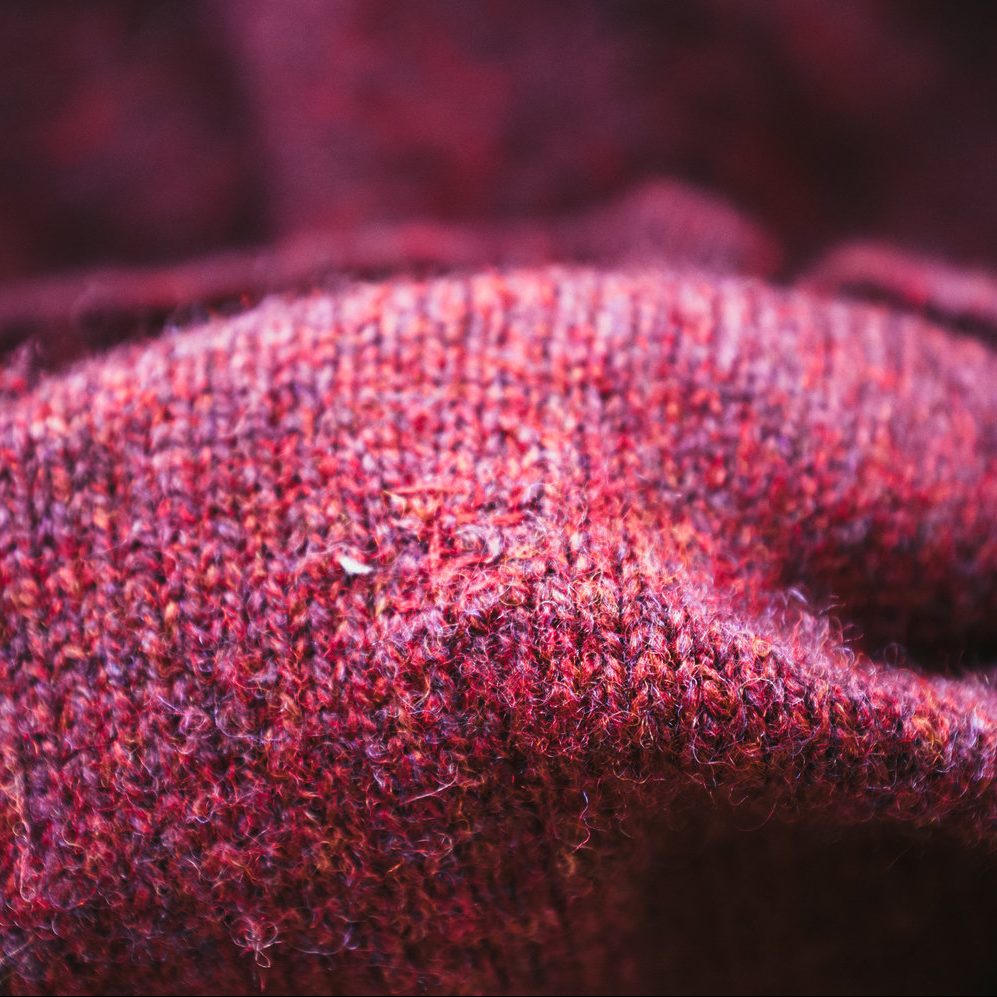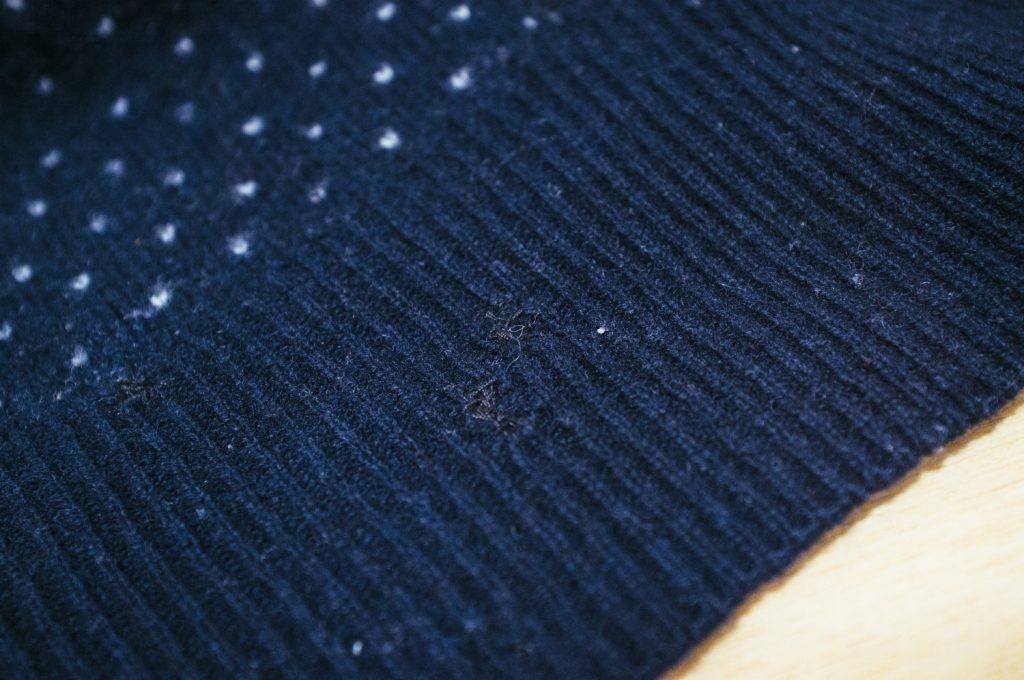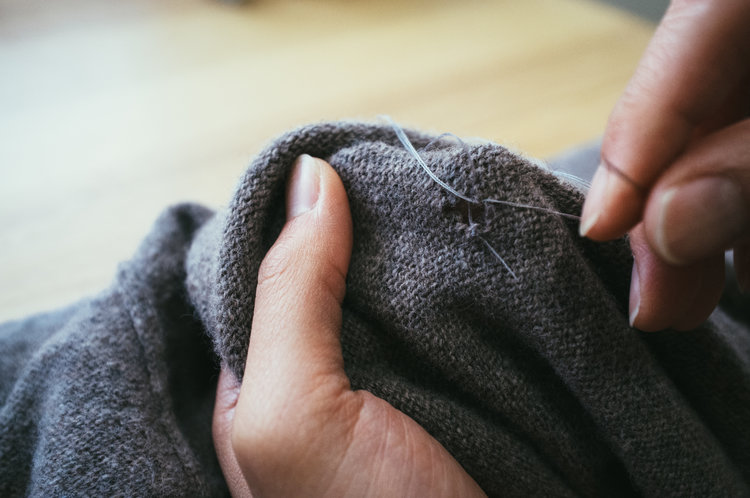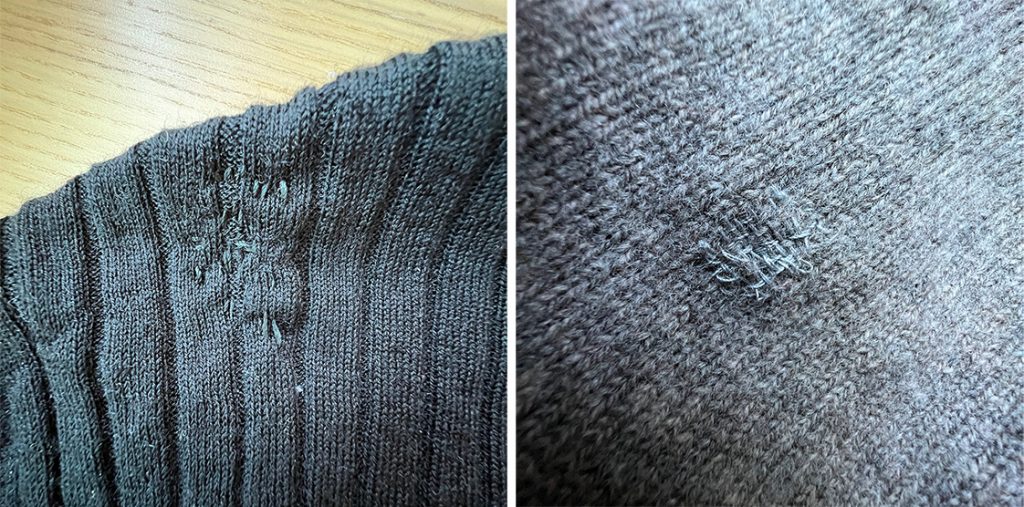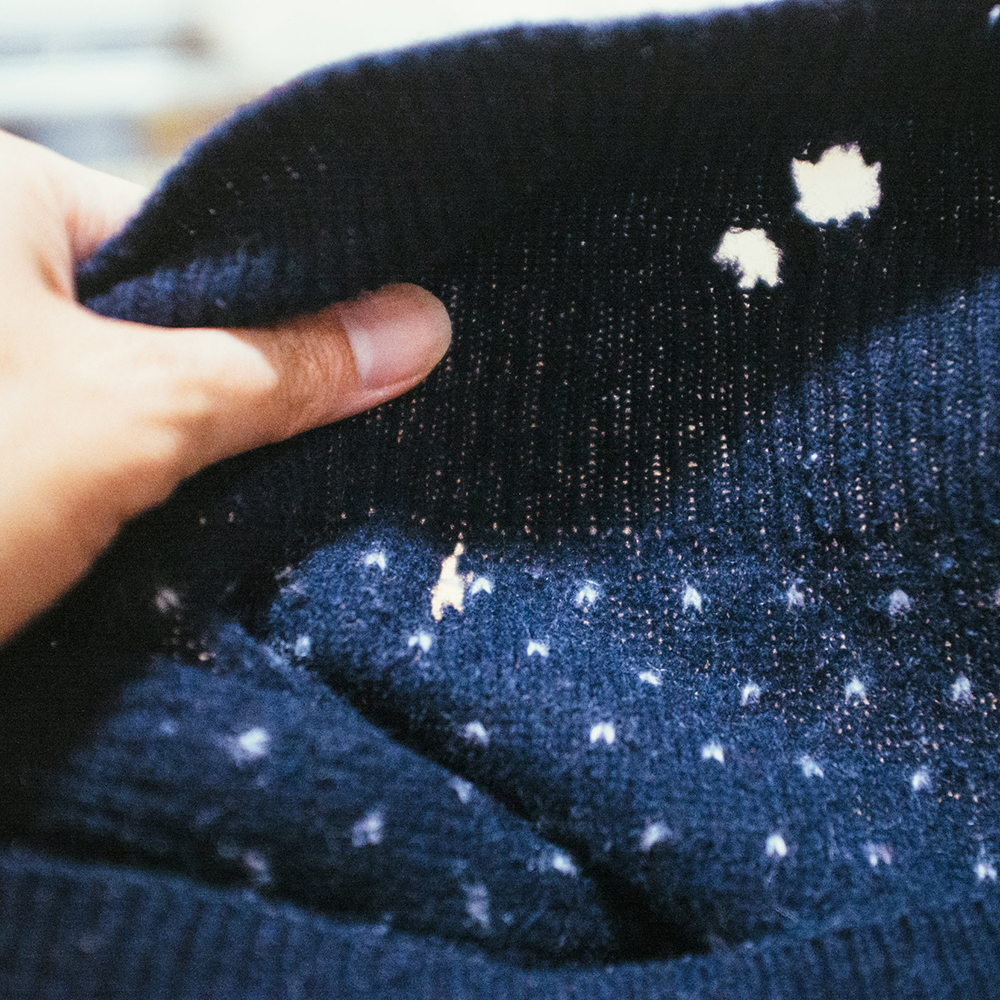
As the weather outside has gotten chilly, many of us will find ourselves reaching for our favorite knitwear. But just as you’re about to put your sweater on, you may notice a small hole. Perhaps your belt buckle rubbed against it while you were washing dishes. Or your cat swiped at you. Maybe worst of all, a moth found its way to a delicious meal despite your best sweater-keeping methods. No matter the reason, finding a hole in your knitwear is disheartening.
However, it’s not hopeless. Although holes can appear devastating, you can repair them using darning. Darning is a repair technique that fills a gap with new material, rather than requiring you to patch it or sew it closed. When done with yarn that resembles the original material, the repair can be almost undetectable.
There are two ways to repair a hole in a garment: pay a professional or do it yourself. A professional mender will make holes literally vanish. Some specialize in what’s known as French reweaving or invisible reweaving, where individual strands of thread are woven into the original cloth. You can use these companies for holes you find in woven materials, such as what you’ll find on suits, sport coats, or trousers. As you can imagine, such services are not inexpensive — a hole the size of a pencil eraser can easily cost $50 or more to repair. These companies can also fix knitted sweaters, although the same logic applies. The finer the knit, the more expensive the repair, and in some cases, the repair cost may exceed the sweater’s price.
This leaves us with the most economical and arguably, the most rewarding option. If you’re working with a hole in a sweater, you can learn how to darn it yourself. Thankfully, darning is not challenging to learn.
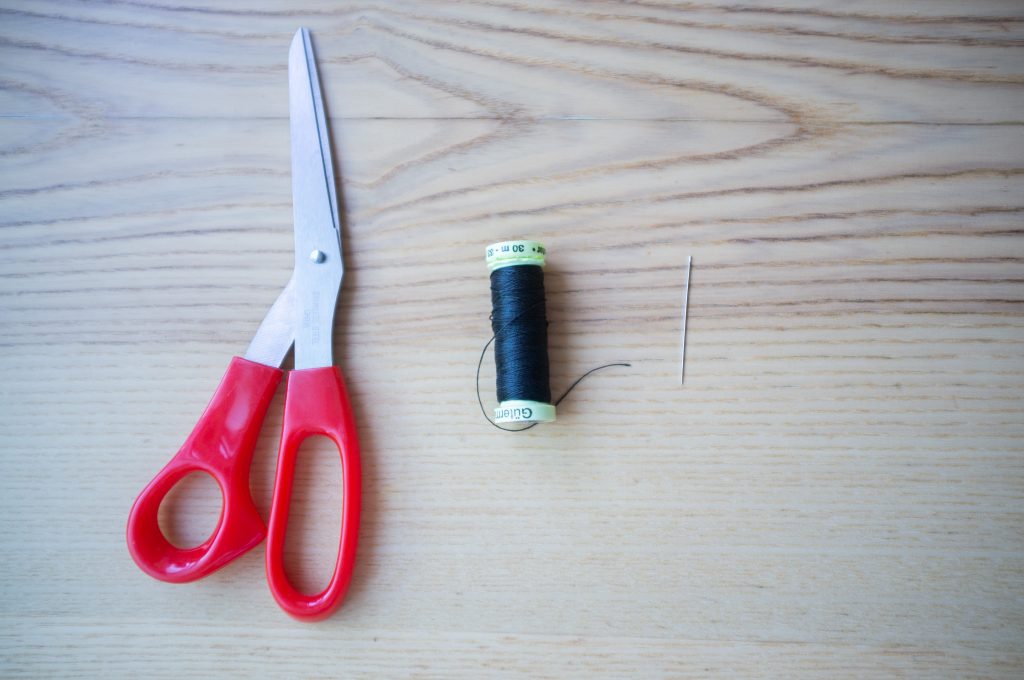
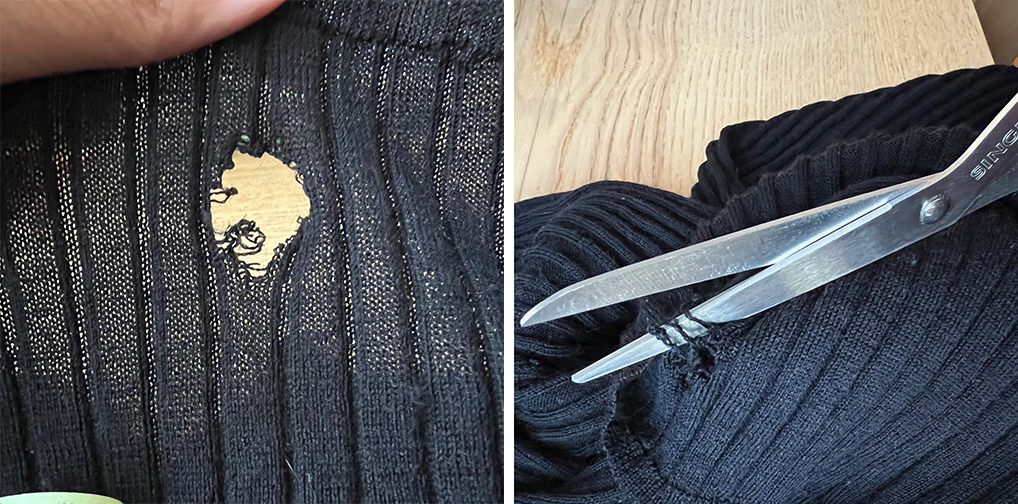
Here’s what you’ll need:
- Needle
- Scissors
- Thread
Optional:
- Darning mushroom. Alternatively, you can also use any hand-sized, round object, such as an orange or a tennis ball.
First, you want to make sure you’re working with a neat, clean hole. If there are any remaining threads or frays, cut them off to have a tidier starting area.
Next, thread your needle. If you’re trying to make your repair less noticeable, you’ll want to use yarn that matches the size and color of the original fabric. Some new sweaters actually come with an extra bit of yarn, so save those whenever you get them.
To start darning, apply a darning stitch, which is a simple running stitch where you weave the thread in rows along the grain of the fabric and reverse directions at the end of the row. Start by doing this horizontally or lengthwise.
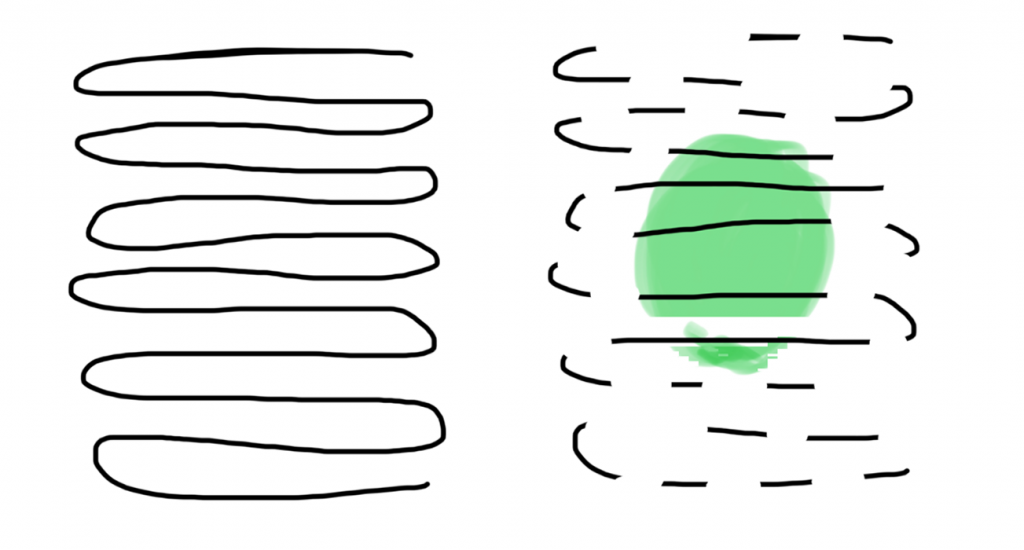
Left: the flow of the darning stitch; Right: darning stitch over the hole, highlighted in green
Make sure not to pull too tightly as you want your stitch to remain loose. Otherwise, you might create some creasing or puckering in the end. A darning mushroom or other round objects can help apply tension to the hole, making it spread out. Remember, the goal is to fill the gap, not close it.
Once completed, you then weave your yarn through the stitches you just completed. You’ll see that you’re weaving in new material as you progress. Eventually, when enough yarn has been incorporated, the hole will be filled.
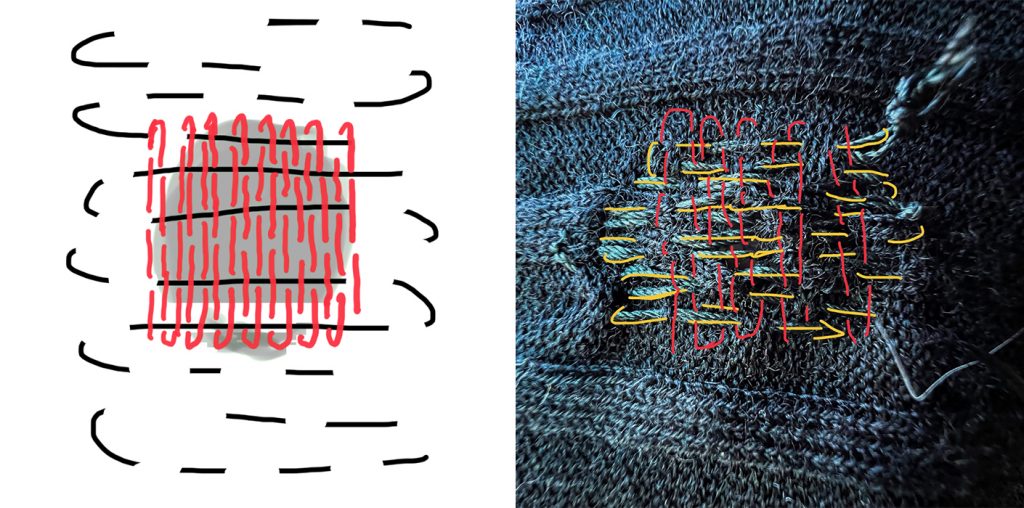
Weaving pattern used over darning stitch, illustrated and over the actual hole
For more darning resources, check out this Reddit guide or Youtube video.
I think the last step is to acknowledge that not every repair will be perfect. Even with some practice, I have difficulty darning larger holes, which are less forgiving than smaller ones. However, even when the repair looks poor, I take great pride in it. Clothes are often an extension of our identity, so I find it noble to see someone has taken the time to repair a garment. You can even inject some character into your repairs by using different color threads or trying new stitches. In the end, you learn a new skill, help the environment by not throwing away a sweater, and hopefully gain a deeper connection with your clothes.
